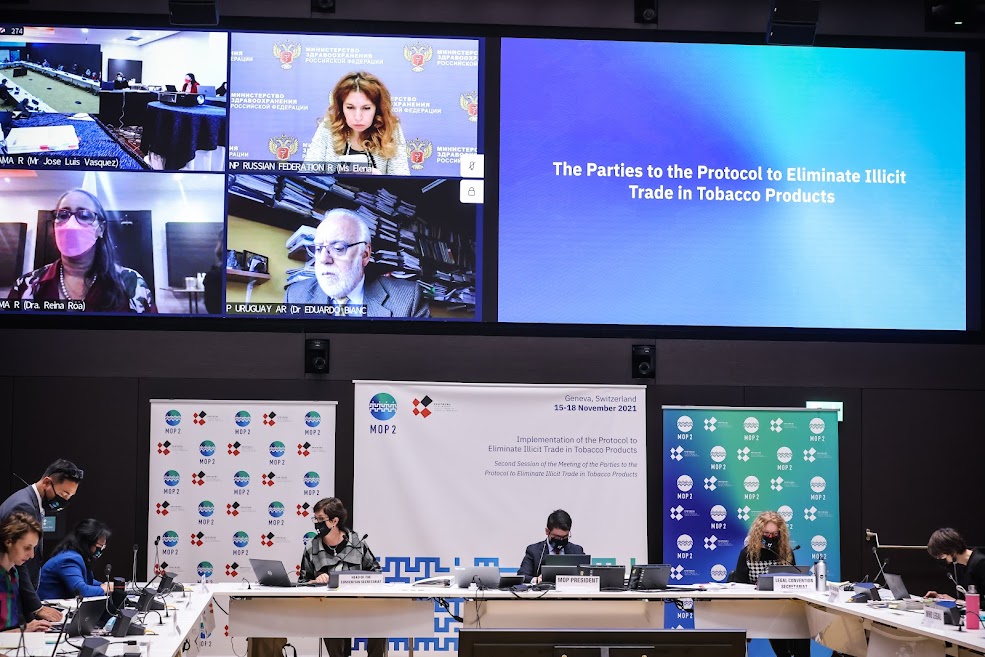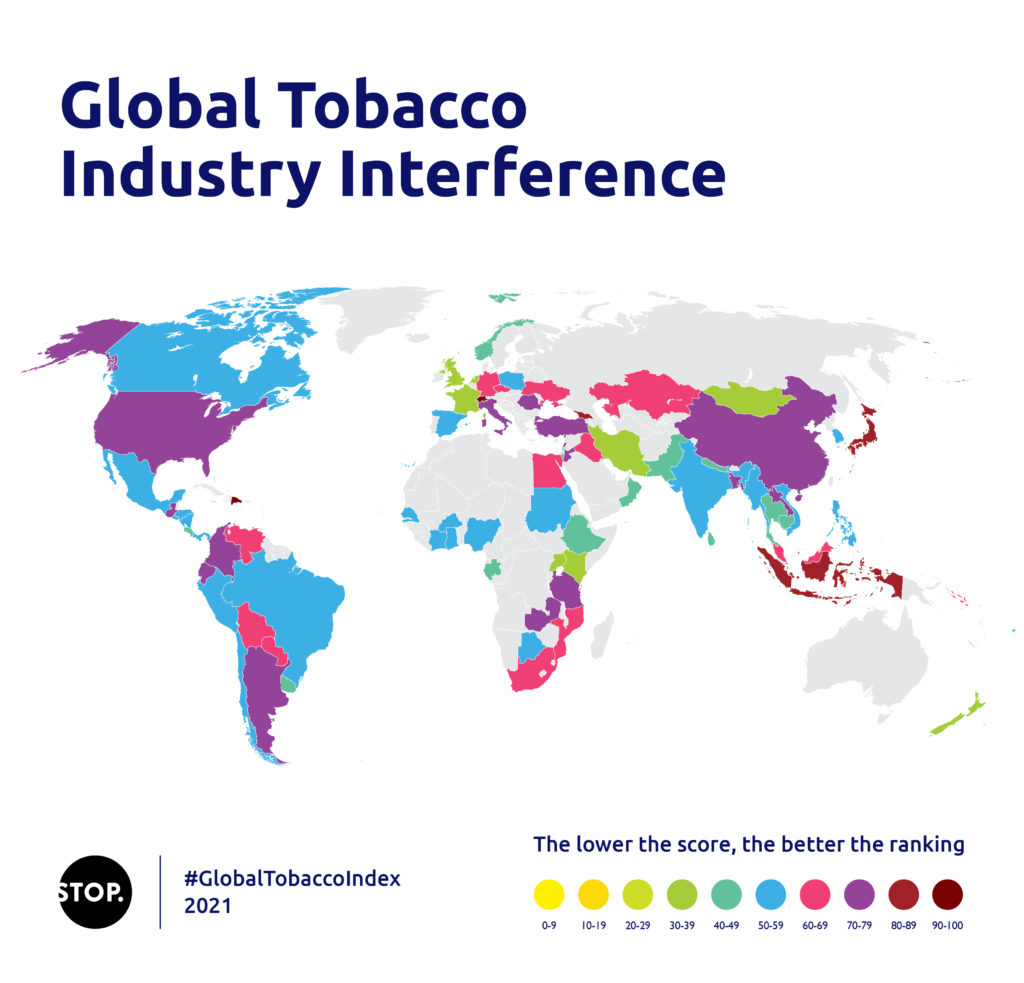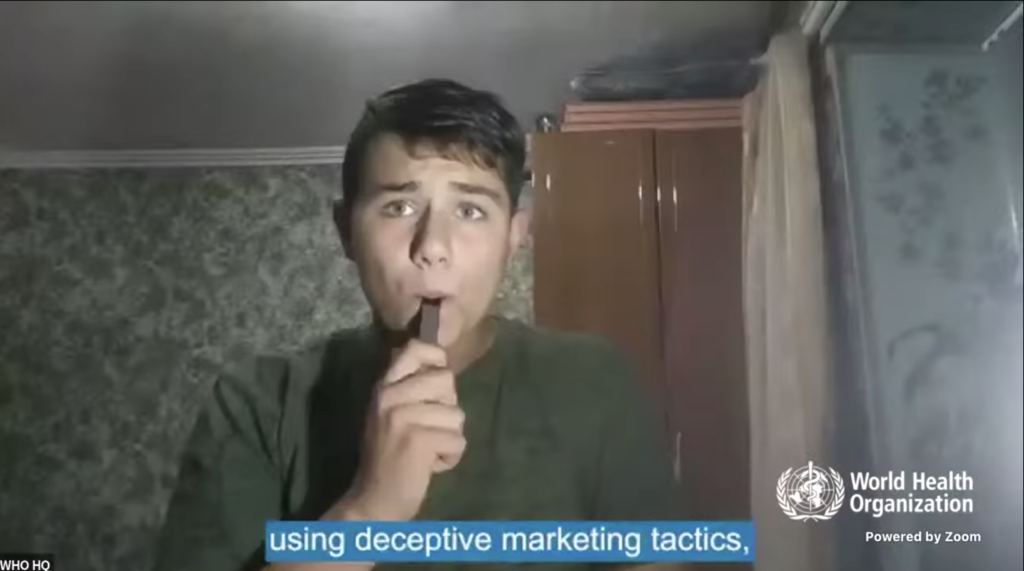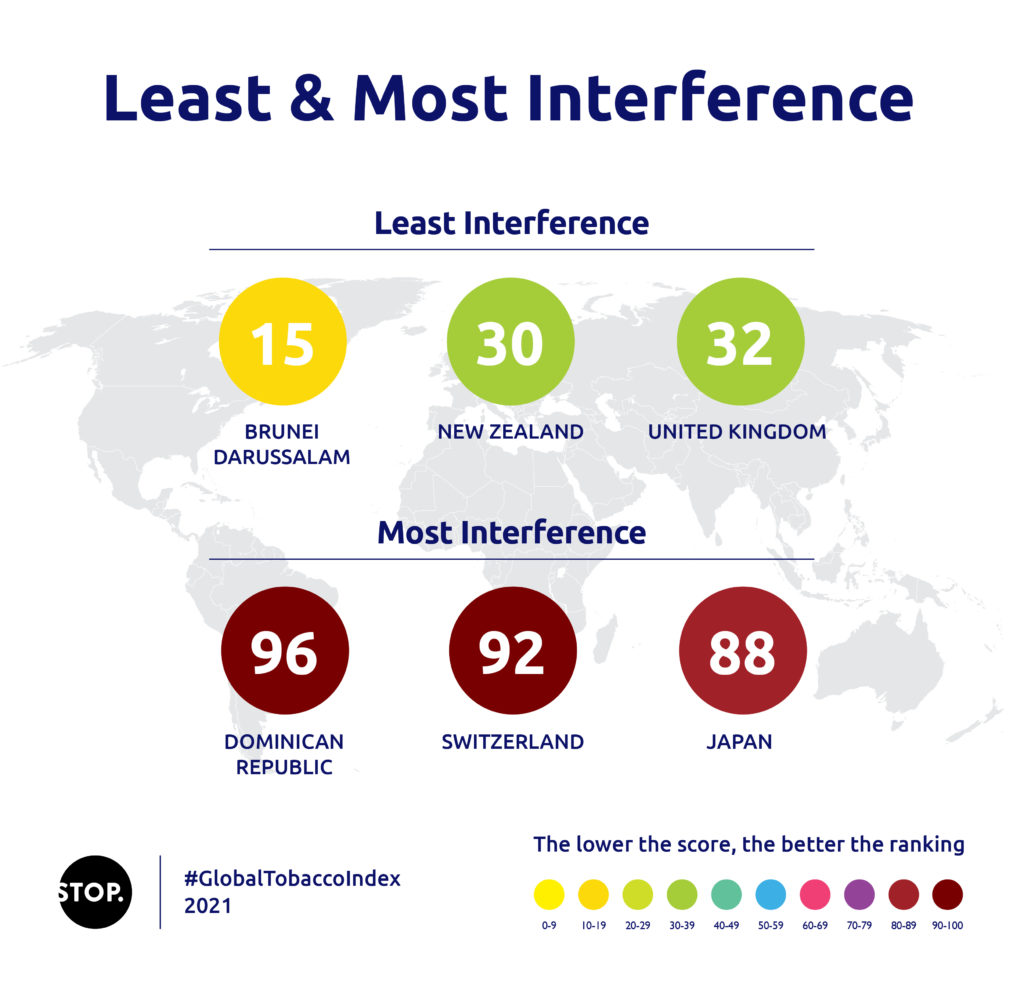Written by Gan Quan
First published in Health Policy Watch.

While the world was focused last week on the Glasgow Climate Conference (COP26), officials from 160 countries and the European Union gathered virtually to address another urgent global crisis – the crisis in tobacco consumption that is one of the largest causes of death worldwide, year after year.
Otherwise known as COP9, the ninth Conference of Parties to the WHO Framework Convention on Tobacco Control (FCTC), made significant strides with comparatively little attention – apart from partisan campaigns that denigrated the WHO and the global health treaty.
The fact that such negative messages align with the interests of cigarette companies should come as no surprise. There is clear urgency for this work: tobacco use kills more than 8 million people every year. The FCTC is central to ending the global tobacco epidemic.
At the same time, progress is a threat to the rich and powerful vested interests of tobacco companies. As with efforts to address climate change, advancing proven policies to save lives from tobacco is a hard-won battle.
Worryingly, in the week before COP9, new research published by industry watchdog STOP, suggested that big tobacco – cited by governments as the main barrier to treaty implementation – had taken advantage of the COVID-19 crisis to advance its interests. Industry efforts during the pandemic delayed and weakened health policies to reduce tobacco use in several countries.
Influence of vested interests is key theme at both COP meetings

The influence of vested interests was a key theme at both COP meetings – the one addresing the climate crisis and the one addressing the public health crisis of tobacco use. Industry rhetoric aimed to portray health policies as part of a ‘nanny state’ or even ‘authoritarian.’ Even more insidious were disingenuous claims that regulating industry harms the poorest in our society, when this group often bears the brunt of unhealthy and unsustainable policies – whether they are related to climate change or tobacco use.
The virtual format for COP9 meant there was a shorter, pared-down agenda, with several issues deferred to COP10 in 2023 when they can be discussed and agreed upon in person. These include topical issues like more systematic regulation and disclosure of the contents of tobacco products, including products like waterpipes, smokeless tobacco and heated tobacco products.
Some delegations were understandably concerned that the industry could use this deferral to further influence policy between now and the next meeting in 2023, although expert reports on the key issues, which were published at COP9 could be used to help guide national policy development in the interim.
In a first-ever COP that was fully open to accredited media, news reports also noted how some countries’ interventions appeared to be designed to delay discussions at COP9, reflecting the interests of powerful tobacco companies.
For example, delegations from the Dominican Republic and the Philippines, which included officials from departments such as trade & industry, finance, agriculture and foreign affairs, argued that tobacco is a positive force in their country, while not fully addressing the costs or harms of tobacco use. Such industry-aligned activity was so pronounced within the Philippines delegation that the Philippines’ Department of Health was compelled to issue a statement disassociating itself from statements made by its other delegates.
Virtual pro-vaping event on COP9 sidelines tried to divert attention

Industry-friendly rhetoric was abundant on the virtual sidelines of COP9 too. One group created a virtual pro-vaping event it tried to cast as an alternative to COP9; it was amplified by a flurry of social media activity and press releases.
Despite all this chatter, however, the more than 1,200 delegates present made progress, and the results represent a global consensus.
Included in these positive decisions was an agreement to establish a new sustainable funding mechanism to support countries’ and global FCTC implementation, with a hoped-for $2-3 million annually in additional resources. There was also explicit support for the FCTC Secretariat’s efforts to increase transparency: as per the agreement by delegates to open the meeting to accredited media in addition to accredited non-state observers (as well as countries and territories that are not formal FCTC parties). Opening and closing sessions also were broadcast live.
At a regional level, nearly all the delegates from the Americas region issued a joint statement to confirm that they had voluntarily signed and submitted Declaration of Interest forms, in line with a decision at COP8 to help reduce industry interference. Delegates from across Africa called out tobacco industry tactics and called for the tobacco industry to be held liable for the harm it has caused. Both regions are strategic targets for tobacco companies working to expand their markets and grow their profits in emerging economies.
COP9 Declaration – protecting policy from industry influence

The culmination of the week was the approval of the COP9 Declaration, in which Parties agreed to accelerate implementation of the Framework Convention, and make efforts to protect policy from industry influence to support COVID-19 recovery. Governments were also encouraged to implement parts of the treaty that protect policy from industry interference.
This will not, of course, stop tobacco companies from trying to recast themselves as a solution to the problem they created. This is an issue that echoed through this week, at the subsequent Meeting of Parties to the Protocol to Eliminate Illicit Trade in Tobacco Products (MOP2). Evidence shows that, even while the tobacco industry promotes flawed, proprietary solutions to address tobacco smuggling, it may be complicit in the illicit trade of its own products.
We are reminded, meanwhile, by WHO’s latest report on tobacco trends, also published this week, that there are still more than a billion tobacco users around the world, not including e-cigarettes and heated tobacco products. Tobacco companies are producing and selling trillions of deadly cigarettes every year, while their rhetoric steers public conversation away from that inconvenient fact.
As Health Policy Watch said in its report on COP9, it’s a David and Goliath struggle. Taking action in line with the COP9 declaration would be a true win-win for health. With political will and support from the FCTC Secretariat and other organizations, governments can make real progress to reduce tobacco use before COP10 in 2023. The time to act is now.
Gan Quan is the Director of Tobacco Control at The Union, and a partner in STOP, a tobacco industry watchdog, funded by Bloomberg Philanthropies. He has over 17 years of experience in tobacco control advocacy and research in Asia, North America and globally. Gan Quan has a PhD in Public Health from the University of California – Berkeley.
Image Credits: City of Bengaluru, WHO/Pierre Albouy, Global Tobacco Industry Interference Index 2021 (STOP), STOP: Global Tobacco Industry Interference Index 2021.
